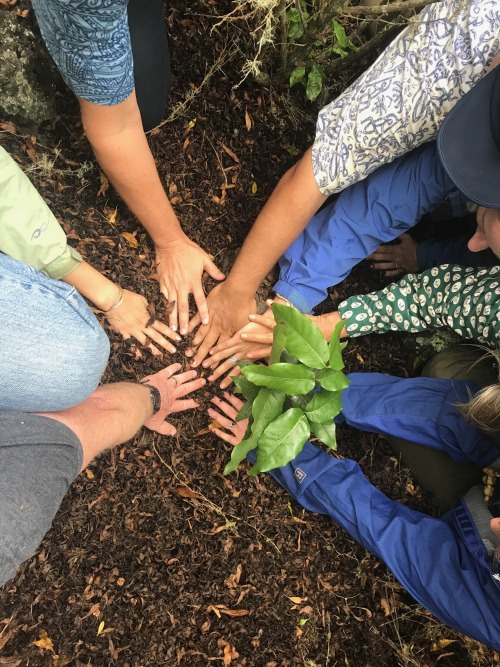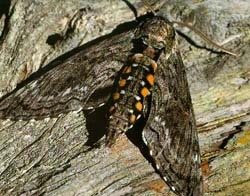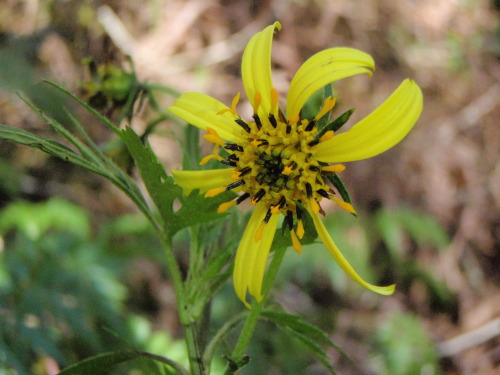Conservation Partnership Restores Rare Hawaiian Dry Forest

Photo: The partnership between conservation agencies and private landowners like the ‘Ulupalakua Ranch have allowed out-planting of essential dry forest plant species to include endangered Hawaiian plants. Photo credit: USFWS
The Auwahi Forest Restoration Project, the US Fish and Wildlife Service (Service), and the Natural Resources Conservation Service (NRCS) will celebrate 20 years of conservation at ‘Ulupalakua Ranch and the contributions of the Erdman family and the community to native forest restoration and protection.

Photo: Auwahi Forest Restoration Project is helping to restore vital Hawaiian dry forest ecosystems for Native plants and wildlife. Photo credit: USFWS
In 1997, ‘Ulupalakua Ranch partnered with the FWS and NRCS and began one of the first and most ambitious large scale forest restoration projects in Hawaii. The Auwahi Forest Restoration Project began with community volunteer restoration trip. These trips have run continuously since 1997 and volunteers have planted over 125,000 native trees. Through the years, more than 1,600 Maui residents including students, educators, ranchers, policy makers, scientists, canoe paddlers, artists, and photographers have volunteered over 37,000 hours towards restoration efforts at Auwahi.

Photo: Family members from the ‘Ulupalakua Ranch, National Resources Conservation Service and US Fish and Wildlife Service walking the grasses of Auwahi forest. Photo credit: USFWS
“Conservation and recovery depend on collaborative conservation efforts like the Auwahi dry forest restoration effort,” said Pacific Islands Fish and Wildlife Office Field Supervisor Mary Abrams. “When a group of dedicated people come together, they can make a huge difference for Hawaii’s threatened and endangered species. Twenty-five percent of the endangered plant taxa in the Hawaiian Islands are from dry forest habitat and conservation projects like this make an important impact on their future.”
Native forests of ‘Ulupalakua Ranch, in the ‘ahupua’a (district) of Auwahi, are noted in early botanical literature as among the richest and most diverse forests in the Hawaiian Islands. Prior to the arrival of Europeans, Auwahi and forests like it were wahi pana, invaluable as source sites for a wide variety of native fibers, dyes, and woods, each species used for a specific purpose.

Photo: Blackburn’s sphinx moth is Hawai‘i’s largest native insect. This species are mostly from coastal, lowland, and dryland forests.
Once found on six of the Hawaiian islands, the moth now exists only on Maui, Kaho‘olawe, and the island of Hawai‘i. Photo credit: Ellen VanGelder
Because of the impacts of feral animals, fire and invasive plant species, Auwahi and all southern Haleakala forests have declined precipitously; less than 2.5% of the original forest remaining, and that in tatters. In the 1980s, the rapidly declining forests of Auwahi were generally regarded as a tragedy among Hawaiian biologists. One report called Auwahi a ‘museum forest’; similar to a museum in its value, but also like a museum, only older senescent trees were left without successful reproduction for centuries
A new restoration technique was developed utilizing the timed planting of native ‘nurse’ plants intended to rebuild forest understory around native trees and reduce herbicide usage. The technique proved successful, increasing native species cover in restoration areas from 3% to 82%. Nearly two-thirds of native tree species at Auwahi now produce seedlings naturally, signs of a healthy functioning ecosystem, including some species that had not done so in centuries.

Photo: The ‘Ulupalakua Ranch provides a significant portion of habitat for six endangered plant species. One of the eight endangered plant species is a perennial herb in the sunflower family (Asteraceae), occurs only on the island of Maui. Photo Credit: Hank Oppenheimer, Plant Extinction Prevention Program
As a result of the
community and conservation minded dedication of ‘Ulupalakua Ranch at Auwahi,
this Hawaiian dry forest has gone from ecological
failure to example of conservation success and community-based restoration.
None of this would have been possible without the Erdman family, especially father Pardee and son and Ranch Manager Sumner. The Ranch re-dedicated valuable grazing lands needed to sustain their cattle herd, vulnerable to seasonal droughts, over to native forest restoration.
“In over two decades of working on the Auwahi project, `Ulupalakua Ranch has never requested publicity of any type but instead served largely as a silent and enthusiastic partner. In all my years in conservation, I have never seen another for-profit group act in this way,” said Auwahi Restoration founder Dr. Arthur C. Medeiros. “The Ranch’s generosity has been critical in the preservation of Hawaiian dry forests and in doing so has made a significant contribution towards the protection of our Nation’s natural resources.”

The Auwahi Forest Restoration Project, USFWS and the NRCS recognized the community, `Ulupalakua Ranch, and Erdman family in the restoration and protection of Native Hawaiian dry forest. Photo credit: USFWS
In addition to `Ulupalakua Ranch, the FWS, and NRCS, the Auwahi project also receives support from the Frost Family Foundation, Maui County Department of Water Supply, Hawai’i Community Foundation, Hawai’i Tourism Authority, Maui County Office of Economic Development, and the Edward J Anderson Foundation.
Auwahi is among the world’s most endangered tropical dry forests with nine endangered species and seven other species on the IUCN Red List. Culturally, leeward forests are highly valued by native Hawaiians for ethnobotanical source materials, especially durable hardwoods for tools and weapons, and species with utilitarian, medicinal or religious significance.
Click here to see the original press release.
For more information about the Auwahi Restoration Project visit: http://www.auwahi.org/
Photos available on Flickr at https://www.flickr.com/photos/usfwspacific/albums/72157684282609961
Discover more about Maui’s USFWS Refuge at https://www.fws.gov/refuge/kealia_pond/
Read more about another Maui conservation success story at http://bit.ly/2v5wVeH
